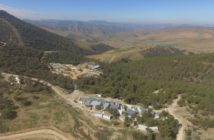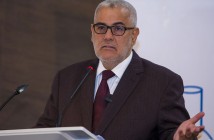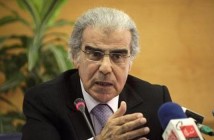 By David Morris, for the Pulitzer Center, MoroccoSimone, our Moroccan surf guide, told us to be careful and I believed whatever he said because he was a good surfer. “Here there is only one way into the water and one way out. And you must be careful of the rocks and the urchins. Very sharp. Wait for the waves to stop. Calm. Then you jump.”Simone had taken me and three other surfers to Boilers, a tricky right point breaking directly over the rocks. Just getting out to where the waves break was a process which involved threading the needle between a large rock outcropping and an abandoned 50-ton ship’s boiler that gives the spot its name. The five of us had just spent all afternoon paddling through chop at an inferior spot to the north and our arms were tired and beginning to cramp, a bad thing in surf of any size. An hour before, Will, a 19-year-old surfer from Essex, had broken his board in two after dropping in on a steep wave, a fact which to a surfer’s haunted mind can seem like a bad omen, a preview, a portent from the other side.Immediately after giving us instructions, Simone zipped up his wetsuit and sprinted for the water, board under his arm. We all watched as he stood poised on the rocks, waiting for the perfect moment and then leapt into the cold water. A minute later I followed suit, doing my best Simone impression, finally making it out to the line-up where I began the eternal wait for a wave with my name on it.Simone was from Kenitra, a small town in the far north that is the cradle of Moroccan surfing. According to legend, the first surfer in Morocco was a US Marine stationed at Kenitra in the 1950s. When I asked Simone where he had first seen people surfing, I expected to hear him say in a magazine or on TV. Instead he said, “Here in Morocco! In real life!”Simone’s story of how he learned to surf makes me feel like a spoiled brat.”I start with swimming, paddling out in the waves. No wetsuit. Eventually I make friends with surfers out in the water. Sometimes they give me their board for a wave and say, ‘You are no good. Give me back my board!’ After awhile they let me keep the board for a few waves and I get better.””How long before you got your first board?” I asked.”Ten years. By then I was a good surfer.”Surfing in coastal Morocco is a lot like soccer is in the rest of the world. In towns like Taghazout and Sidi Ifni, one sees more surf gear than soccer gear. Instead of Real Madrid jerseys, the local kids wear Billabong hoodies and play on skateboards. Walking the streets you can hear songs from the international trinity of surf music (Bob Marley, Jack Johnson and Ben Harper) echoing from cafes. It is as if the best parts of California surf culture have been exported to Morocco, with surprisingly little lost in translation and with the right kind of eyes you can almost see a sort of global surf stoke blowing through the streets with the morning fog. That these good vibrations are antithetical to radical Islam goes without saying; the only copy of the Islamist philosopher Sayid Qutb I found in a local bookstore was in English and its margins had been enthusiastically marked up by an Englishman. As Mohammed, a polyglot surf shop owner in Taghazout, put it, “Surfing is the perfect life. In the water nobody talks about terrorism, economics, or politics.”READ MORE AT THE PULITZER CENTER Posted by Spot. Us on 09/21/11
By David Morris, for the Pulitzer Center, MoroccoSimone, our Moroccan surf guide, told us to be careful and I believed whatever he said because he was a good surfer. “Here there is only one way into the water and one way out. And you must be careful of the rocks and the urchins. Very sharp. Wait for the waves to stop. Calm. Then you jump.”Simone had taken me and three other surfers to Boilers, a tricky right point breaking directly over the rocks. Just getting out to where the waves break was a process which involved threading the needle between a large rock outcropping and an abandoned 50-ton ship’s boiler that gives the spot its name. The five of us had just spent all afternoon paddling through chop at an inferior spot to the north and our arms were tired and beginning to cramp, a bad thing in surf of any size. An hour before, Will, a 19-year-old surfer from Essex, had broken his board in two after dropping in on a steep wave, a fact which to a surfer’s haunted mind can seem like a bad omen, a preview, a portent from the other side.Immediately after giving us instructions, Simone zipped up his wetsuit and sprinted for the water, board under his arm. We all watched as he stood poised on the rocks, waiting for the perfect moment and then leapt into the cold water. A minute later I followed suit, doing my best Simone impression, finally making it out to the line-up where I began the eternal wait for a wave with my name on it.Simone was from Kenitra, a small town in the far north that is the cradle of Moroccan surfing. According to legend, the first surfer in Morocco was a US Marine stationed at Kenitra in the 1950s. When I asked Simone where he had first seen people surfing, I expected to hear him say in a magazine or on TV. Instead he said, “Here in Morocco! In real life!”Simone’s story of how he learned to surf makes me feel like a spoiled brat.”I start with swimming, paddling out in the waves. No wetsuit. Eventually I make friends with surfers out in the water. Sometimes they give me their board for a wave and say, ‘You are no good. Give me back my board!’ After awhile they let me keep the board for a few waves and I get better.””How long before you got your first board?” I asked.”Ten years. By then I was a good surfer.”Surfing in coastal Morocco is a lot like soccer is in the rest of the world. In towns like Taghazout and Sidi Ifni, one sees more surf gear than soccer gear. Instead of Real Madrid jerseys, the local kids wear Billabong hoodies and play on skateboards. Walking the streets you can hear songs from the international trinity of surf music (Bob Marley, Jack Johnson and Ben Harper) echoing from cafes. It is as if the best parts of California surf culture have been exported to Morocco, with surprisingly little lost in translation and with the right kind of eyes you can almost see a sort of global surf stoke blowing through the streets with the morning fog. That these good vibrations are antithetical to radical Islam goes without saying; the only copy of the Islamist philosopher Sayid Qutb I found in a local bookstore was in English and its margins had been enthusiastically marked up by an Englishman. As Mohammed, a polyglot surf shop owner in Taghazout, put it, “Surfing is the perfect life. In the water nobody talks about terrorism, economics, or politics.”READ MORE AT THE PULITZER CENTER Posted by Spot. Us on 09/21/11
Global Stoke in the Maghreb – Surfing the Arab Spring
Share.






